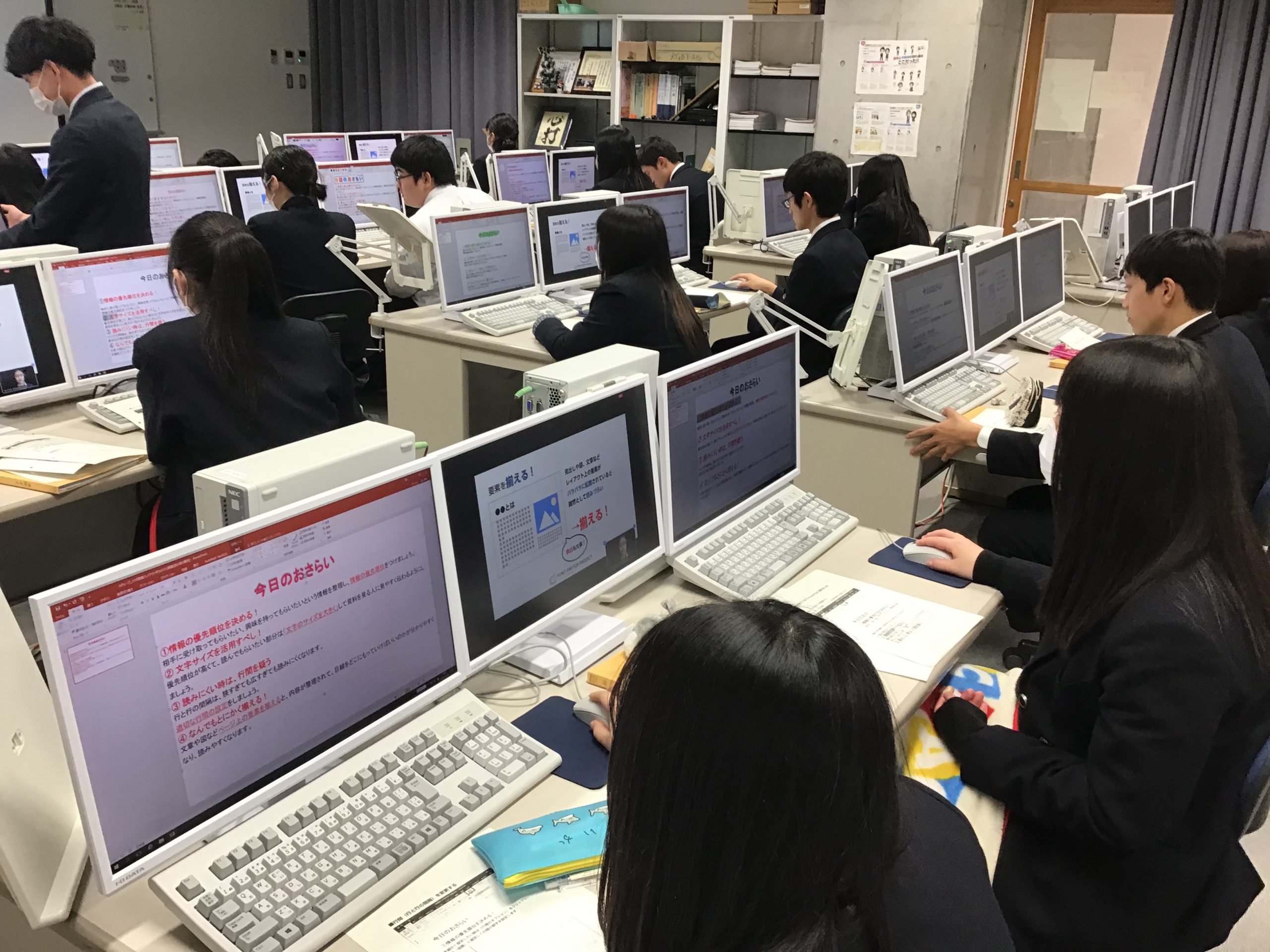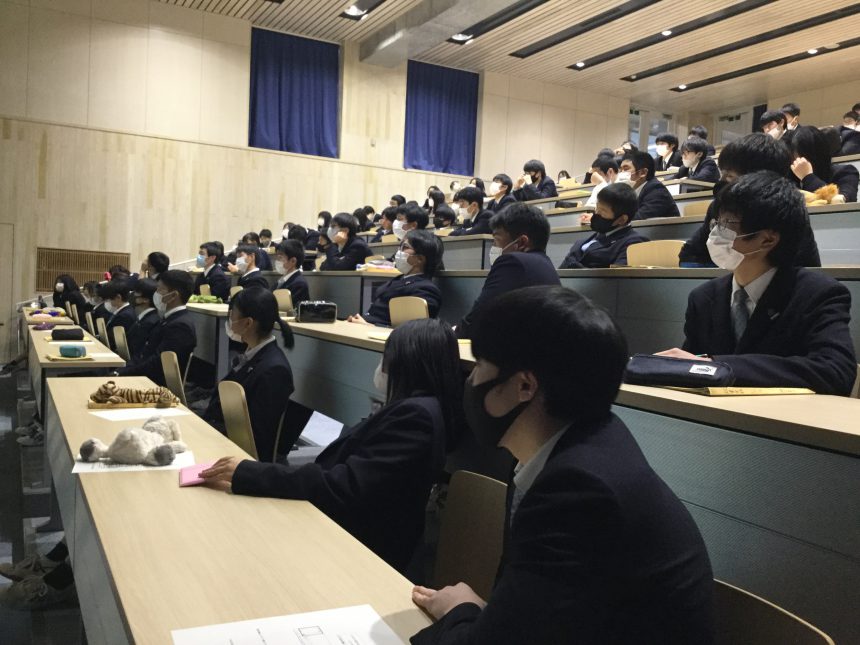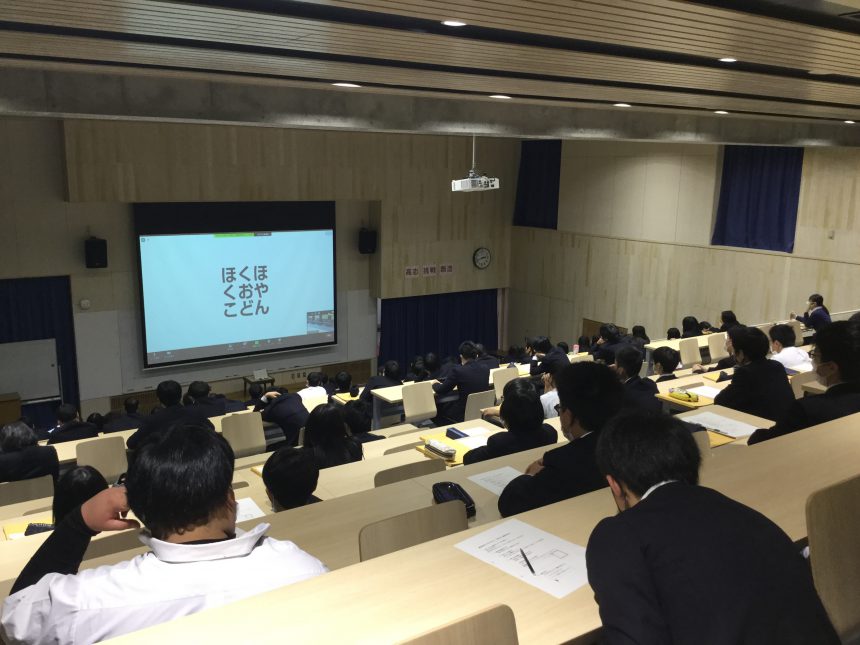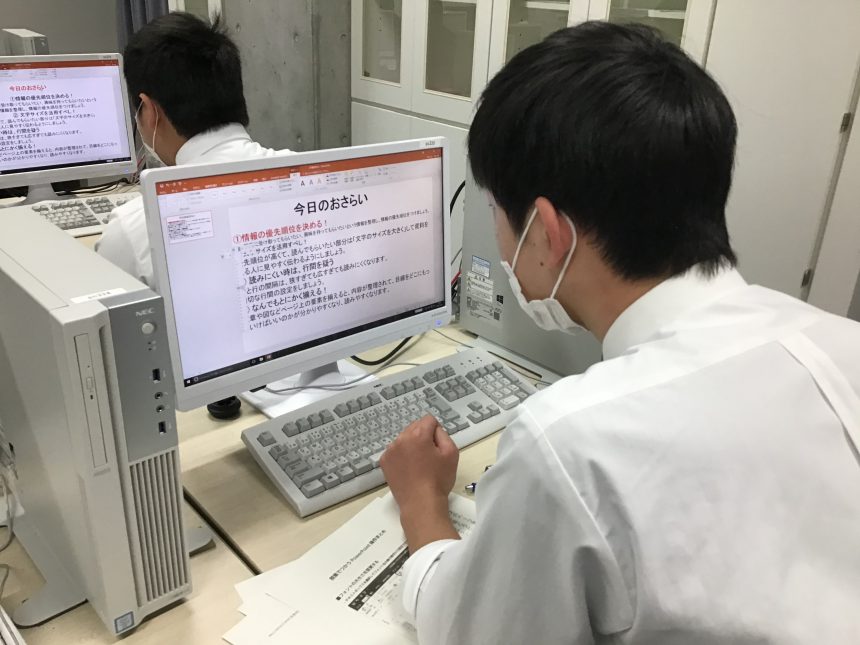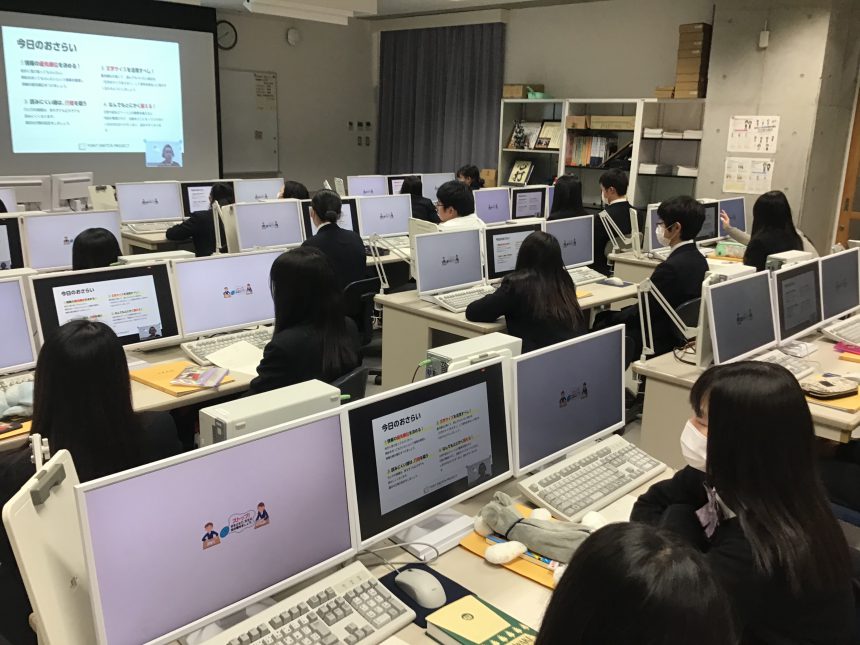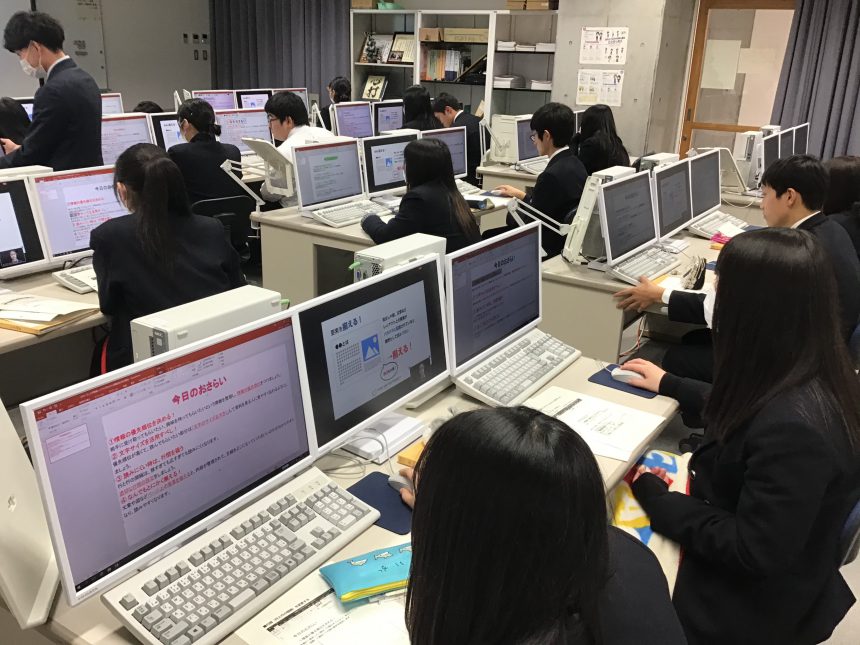
As part of an industry-academia collaboration initiative, Morisawa Inc. held a class on "layout" and "fonts" at Tome Comprehensive Industrial High School in Miyagi Prefecture.
Miyagi Tome Comprehensive Industrial High School is the first comprehensive industrial high school in Miyagi Prefecture, with six departments (Agriculture, Mechanical Engineering, Electrical Engineering, Information Technology, Commerce, and Welfare). Students study specialized fields every day, and many of them look forward to finding employment after graduation. The school felt that knowledge of "layout" and "fonts" was something that all departments should learn, which led to the implementation of this industry-academia collaboration project.
The class introduced the basics of "layout" and "fonts," tips on how to use them, and UD (Universal Design) fonts, which are now gaining attention in the educational field. The aim is for students to use this knowledge in their student life and in creating materials after they start working, as well as to continue to develop an affinity for fonts in the future.
Class flow
The classes were held over two days and students were divided into two groups based on the learning needs of each department.
For the agricultural, mechanical and welfare groups, we held lectures that focused on familiar fonts.
On the first day, students learned about layout tips for creating materials that communicate effectively, and on the second day, they learned about fonts that are all around us. In class, students searched through their personal belongings for Morisawa fonts that are close to them, and changed the typeface on their school's homepage to experience the change in the impression that a typeface gives.
For the Electrical Engineering, Information Technology and Business groups, we held a practical lesson on creating materials using PowerPoint.
On the first day, participants learned about layout points for creating materials that communicate effectively, and after class, they used what they learned to brush up sample materials prepared by Morisawa to make them more effective. On the second day, participants corrected the work created by the students and learned about how to use fonts.
Comments from students
"I realized that even though I use fonts casually, some fonts are easy to read for me but difficult for others to read. From now on, I will be more careful when choosing fonts to use."
"Until now, I'd always thought of design as just that, but these two days of classes have completely changed my perspective on design!"
Students who participated in the class also commented that their thinking about fonts and layout had changed, making this the first step in helping them continue to feel familiar with fonts.
Comments from teachers who participated in the class
Our school offers a class called "Entrepreneurial Practice" as a school-designated subject. This class involves identifying issues in the local area and coming up with various proposals to solve those issues, and we receive cooperation and advice from companies and organizations in the Tome area. During this class, we create explanatory materials and presentation materials.
I felt that the explanatory and presentation materials that students had created up until now had not been designed with the reader (the other person) in mind, but rather had become materials for the creator to use to explain things, resulting in them becoming manuscripts that could be read.
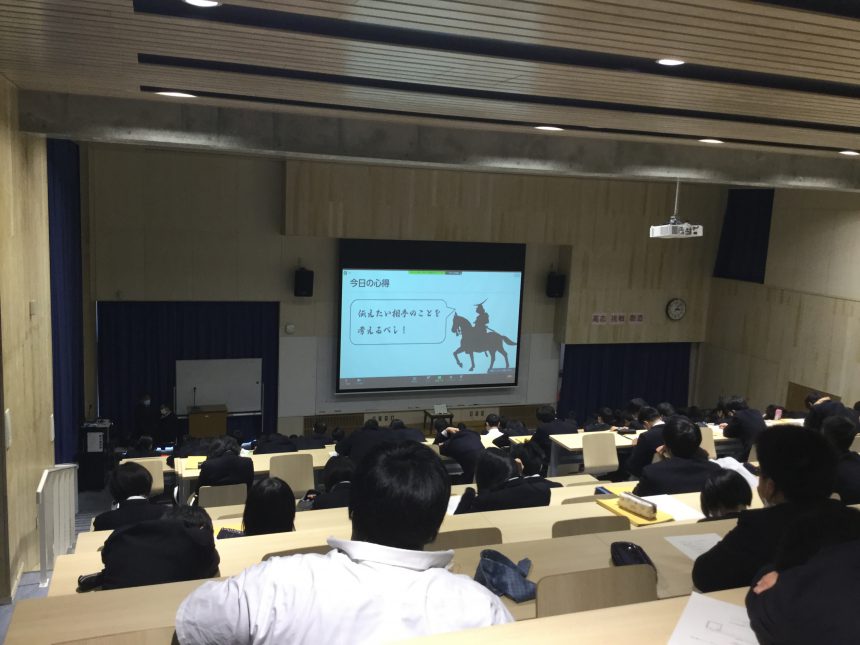
In this lesson for students, we had a recreational activity where they looked for the typefaces (fonts) used in books, catalogs, games, websites, etc. that they see every day, and we also corrected individual pieces of typed presentation materials, so even though it was an online class, the students were able to be creative.
I feel that simply being mindful of layout and fonts will allow you to communicate what you want to say to more people, and this is an important skill for working adults.
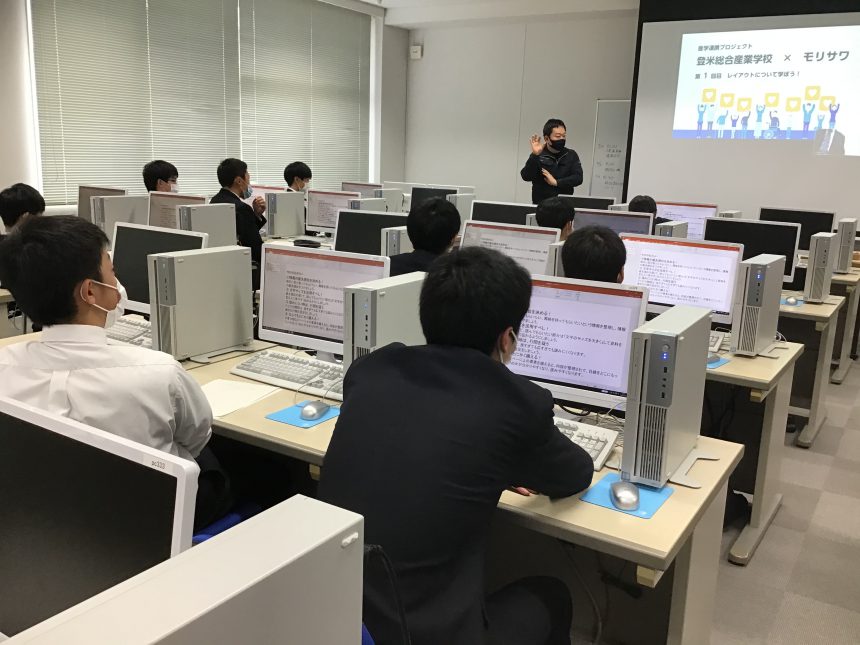
The students are currently working on creating presentation materials, and as I watch them, I notice changes in the layout, fonts, etc., and I feel that their attitude towards creating materials has changed.
Going forward, we will continue to review the materials we have created so far from four perspectives (1. Prioritizing, 2. Font size, 3. Line spacing and line length, 4. Content placement), and, based on the concept of universal design, we would like to challenge ourselves to create materials that can be understood by more people, regardless of whether they have a disability, their age, or their gender.
Thank you to everyone who participated in the class.
I would be happy if the fonts around us become something that is closer to us and that we pay more attention to!

